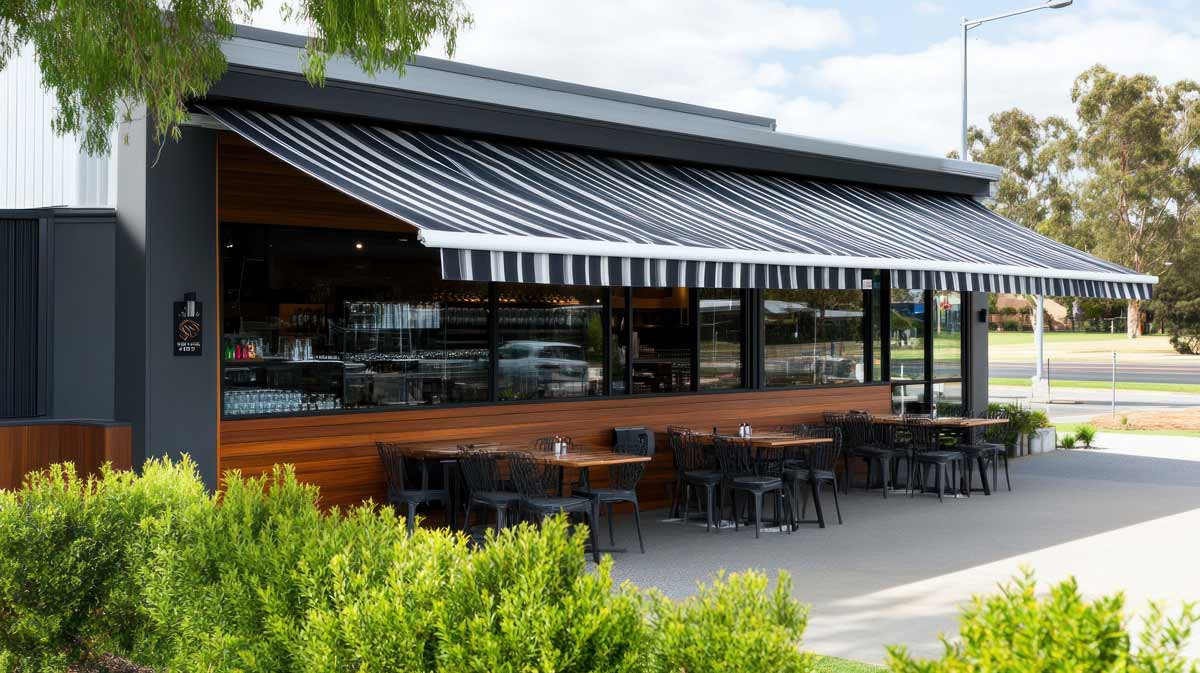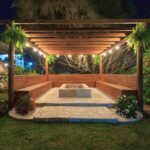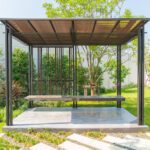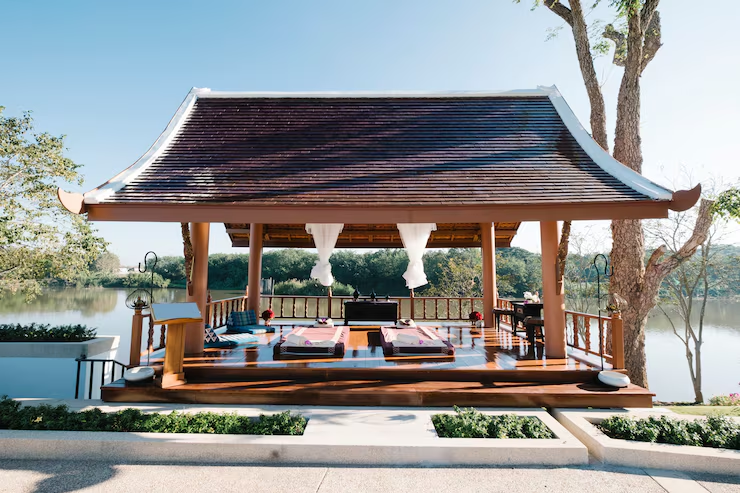In 2025, more Connecticut homeowners are transforming their outdoor spaces. With changing weather patterns and rising energy costs, people are seeking smart ways to stay cool, protect their patios, and reduce utility bills without sacrificing comfort. Retractable awnings offer a flexible solution that adds value to a home while making outdoor areas more usable year-round.
Here are five reasons why retractable awnings in Connecticut are becoming a must-have feature.
Table of Contents
1. Outdoor Living Is More Popular Than Ever
2. Energy Efficiency and Utility Bill Savings
3. Flexible Weather Protection for Outdoor Use
4. Modern Designs That Match Connecticut Homes
5. Smarter Systems for Effortless Use
How to Install a Retractable Awning — Or When to Hire a Pro
How to Choose the Right Fabric for a Retractable Awning
How to Maintain a Retractable Awning Year-Round
Frequently Asked Questions (FAQs)
Upgrade Outdoor Living with Durkin’s Retractable Awnings!
Key Takeaways
| ✔ Retractable awnings in Connecticut offer flexible shade and expand outdoor living spaces. ✔ Retractable awnings help lower cooling costs by blocking heat before it enters the home. ✔ Awnings protect against UV rays, glare, and light rain for year-round comfort. ✔ Modern designs enhance curb appeal and match a variety of home styles. ✔ Smart features like motorized controls and sensors make operation effortless. ✔ Regular maintenance extends the lifespan of retractable awnings in Connecticut. ✔ Choosing the right fabric ensures long-term durability and weather resistance. |
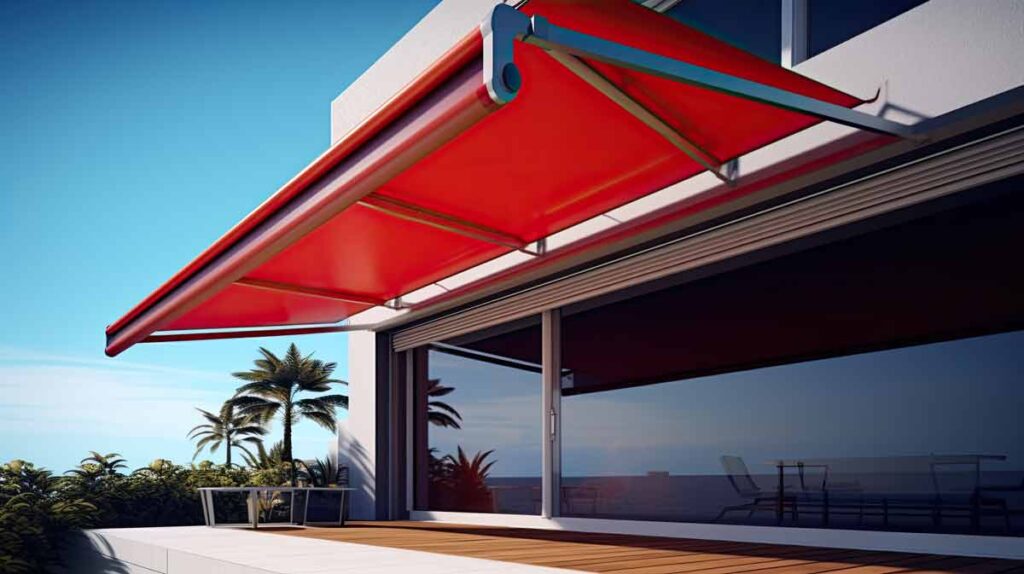
1. Outdoor Living Is More Popular Than Ever
Many Connecticut homeowners are spending more time outside and looking for ways to make backyards feel like an extension of the home. Retractable awnings in Connecticut help create shaded, cozy spaces that support everything from morning coffee to weekend entertaining. As the demand for functional outdoor spaces grows, these awnings are becoming an easy upgrade that makes a big difference.
How Retractable Awnings Support Everyday Outdoor Comfort
- Create Comfortable Shade on Demand: A retractable awning provides instant relief from direct sunlight, helping keep outdoor seating areas cooler even on the hottest summer days. This allows homeowners to enjoy their decks or patios without the discomfort of heat and glare.
- Extend Living Space Without Construction: Instead of investing in permanent structures, more people are choosing retractable awnings in Connecticut to create flexible outdoor rooms. These setups make it easy to host friends, dine outside, or relax in a space that feels like part of the home.
- Make Outdoor Time More Functional: With protection from the sun and light rain, outdoor areas become more useful throughout the day and across seasons. Whether working from home or watching kids play in the yard, an awning adds comfort and versatility to the backyard.
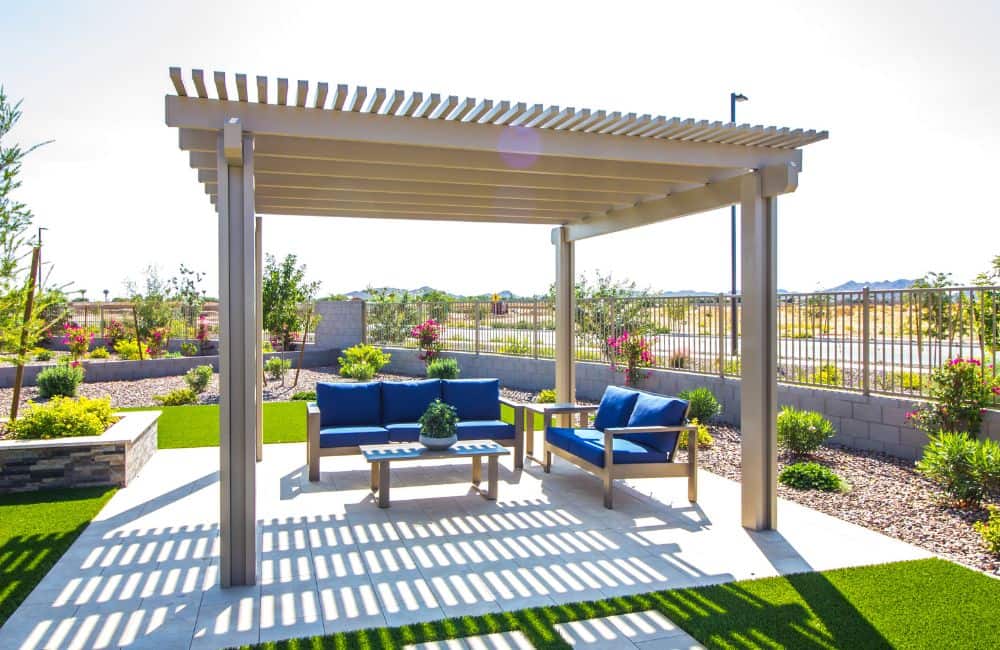
2. Energy Efficiency and Utility Bill Savings
Connecticut homeowners are looking for practical ways to cut costs, and retractable awnings offer an energy-smart solution. By shading windows and reducing indoor heat gain, these awnings help lower reliance on air conditioning.
How Awnings Help Reduce Energy Use
- Block Heat Before It Enters the Home: Retractable awnings in Connecticut can block up to 77% of solar heat from hitting windows and doors, which keeps interior spaces cooler naturally. This reduces the need to run air conditioning all day, especially during the hottest hours.
- Lower Indoor Temperatures Without Extra Equipment: Unlike blackout curtains or thermal blinds, retractable awnings provide passive cooling without taking up space inside the home. They stop the sun at the source, keeping indoor temps more stable and manageable.
- Improve HVAC Efficiency: When a home stays cooler, the HVAC system doesn’t have to work as hard to maintain a comfortable temperature. That can extend the lifespan of equipment and lead to long-term savings on maintenance and energy bills.
3. Flexible Weather Protection for Outdoor Use
Connecticut’s weather can be unpredictable—sun one minute, sudden rain the next. Retractable awnings make it easier to enjoy outdoor areas without constantly checking the forecast. With a quick adjustment, patios and decks stay usable through changing conditions.
How Retractable Awnings Add Year-Round Use
- Shield Outdoor Spaces From UV Exposure: High-quality fabrics block harmful UV rays that can cause skin damage and fade patio furniture. Retractable awnings in Connecticut allow families to enjoy sunny days with less worry and more protection. Window awnings can reduce solar heat gain by up to 65% on south-facing windows and 77% on west-facing windows.
- Stay Dry During Light Rain Showers: Awnings create a barrier that keeps outdoor tables, chairs, and guests dry when unexpected rain passes through. They make it possible to keep grilling, relaxing, or hosting without having to run inside.
- Control Glare for Better Visibility: Whether reading a book or using a laptop outdoors, glare from the sun can make it hard to see screens or pages. A retractable awning softens the light and keeps the space pleasant throughout the day.
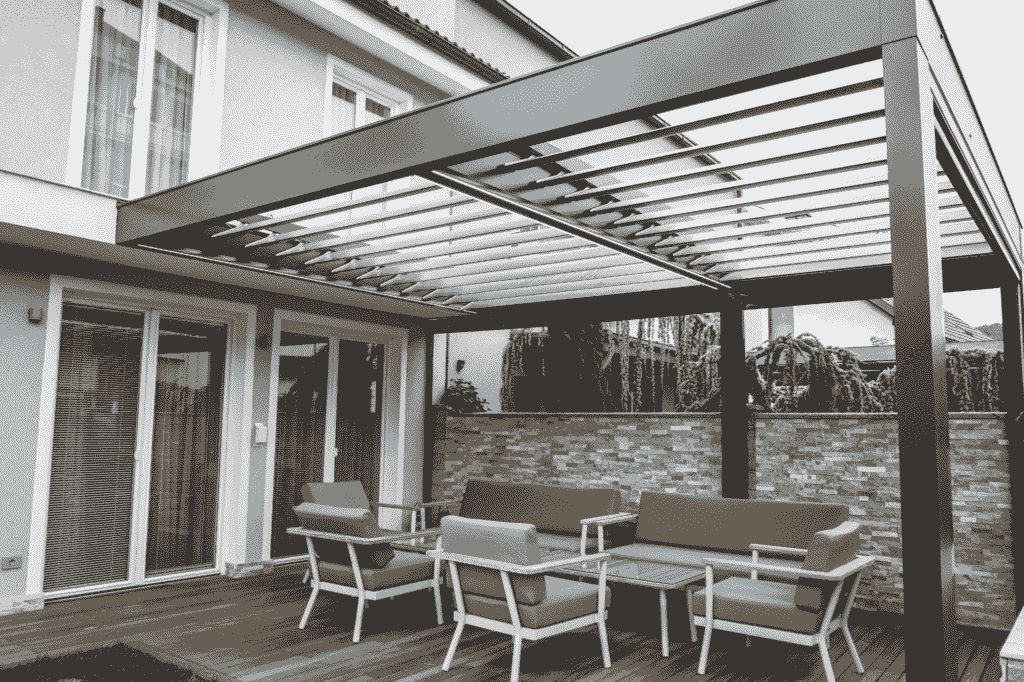
4. Modern Designs That Match Connecticut Homes
Today’s retractable awnings come in more styles, colors, and materials than ever before. Homeowners no longer have to choose between function and appearance—modern awnings offer both. They enhance the look of a property while providing everyday benefits.
How Awnings Improve Curb Appeal and Personal Style
- Match Architectural Styles and Preferences: From classic colonials to contemporary builds, retractable awnings in Connecticut are available in designs that complement a wide range of homes. Frame shapes, fabric textures, and colors can all be tailored to fit a home’s aesthetic.
- Add Subtle Elegance Without Major Renovation: Installing a retractable awning provides a finished look to patios or balconies without expensive structural changes. It’s a simple upgrade that can make the entire exterior feel more refined and welcoming.
- Enhance Resale Value With Practical Style: Outdoor features that blend beauty and utility appeal to homebuyers. An attractive awning can highlight usable outdoor space and signal thoughtful upgrades that set a home apart in a competitive market.
5. Smarter Systems for Effortless Use
Technology has transformed how retractable awnings operate, making them easier to use and more responsive to the environment. Homeowners in Connecticut are choosing models with automation and controls that simplify daily use.
How Modern Awnings Make Life Easier
- Use Remote Controls or Smart Devices: Many retractable awnings now come with remotes, smartphone apps, or home automation compatibility. With one tap, the awning extends or retracts, adding shade when needed without any manual cranking.
- Install Weather Sensors for Automatic Adjustment: Smart retractable awnings in Connecticut can include sensors that detect wind, sunlight, or rain. These systems automatically retract during strong gusts or open when the sun gets too intense—no monitoring required.
Program Daily Routines and Preferences: Timers and smart home systems allow homeowners to set routines for their awnings, such as extending them every morning and retracting at sunset. This creates a more comfortable environment while saving time and effort.
How to Install a Retractable Awning — Or When to Hire a Pro
Installing retractable awnings in Connecticut can be a manageable project with the right tools, clear instructions, and a solid structure to anchor into. Still, not every setup is straightforward. Knowing the steps—and understanding when it’s best to call in an expert—can save time, money, and frustration down the line.
1. Check the Surface for Stability
Before installing any brackets, it’s important to inspect the mounting surface. Brick, concrete, and solid wood framing can support retractable awnings in Connecticut, but vinyl siding or weak fascia boards may not. If the structure feels unstable, professional reinforcement is often needed to avoid future damage.
2. Choose the Right Mounting Type
Retractable awnings typically install using wall, soffit, or roof mounts. Wall mounts are the most common, but roof mounts may be necessary if there isn’t enough vertical space above doors or windows. Selecting the right type ensures the awning operates smoothly without interfering with gutters or trim.
3. Use the Correct Anchoring Hardware
Anchors must match both the surface material and the weight of the awning. For example, lag bolts work well for wood, while masonry screws are essential for brick or concrete. Using the wrong hardware can cause retractable awnings in Connecticut to pull loose during high winds or storms.
4. Level and Align the Brackets Carefully
Even slight misalignment can lead to uneven awning tension or fabric sagging. A long level and measuring tape help keep brackets straight and spaced exactly according to manufacturer specs. Taking the time to double-check alignment prevents performance issues later on.
5. Consider Electrical or Motorized Features
Motorized retractable awnings in Connecticut often require wiring to an outdoor power source or smart home system. This can involve electrical permits or working with high-voltage connections. In these cases, hiring a licensed electrician or installer is usually safer and more efficient than going DIY.
6. Know When to Bring in a Professional
Complex installations—like second-story decks, uneven siding, or mounting near fragile trim—often call for expert help. Professional awning installers in Connecticut have the tools and experience to get it right the first time. Plus, many offer warranties that cover workmanship and installation-related issues.
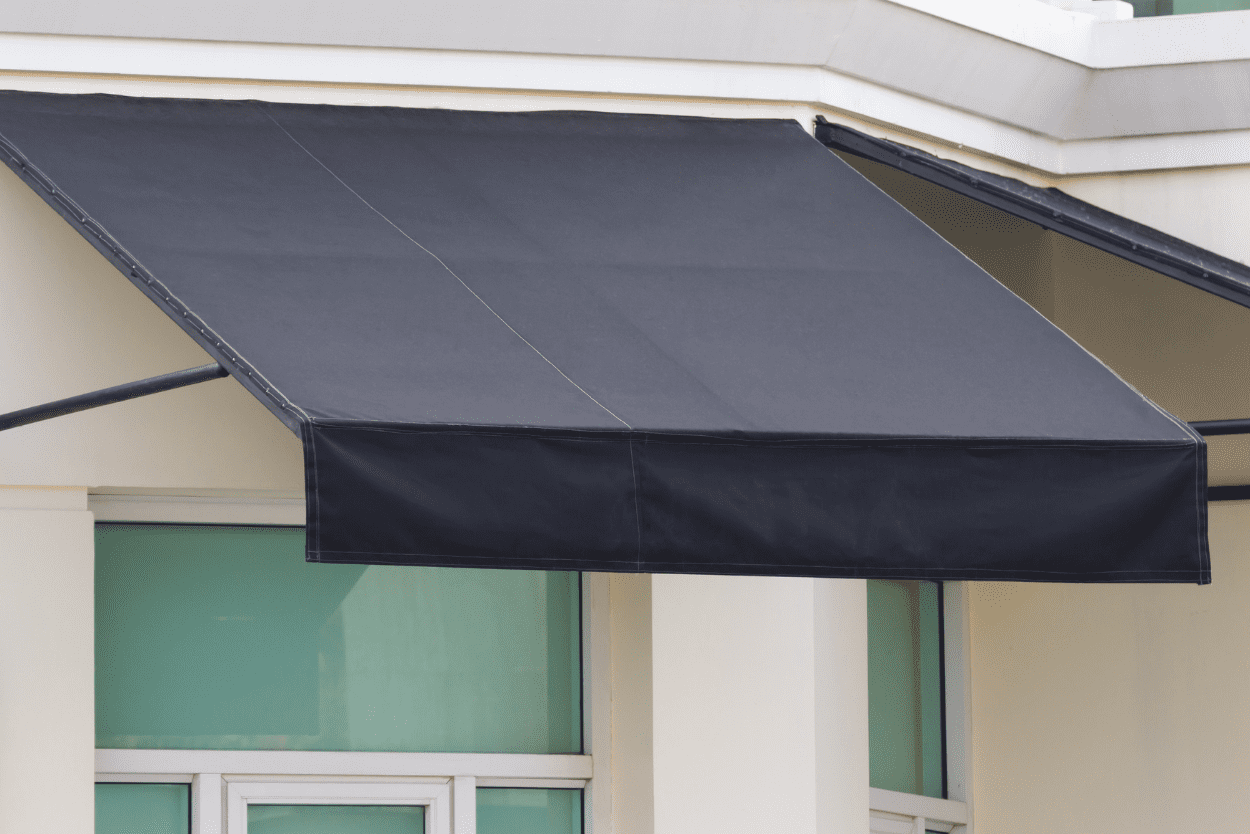
How to Choose the Right Fabric for a Retractable Awning
With the awnings market projected to grow from USD 9,589.60 million in 2024 to USD 15,960.31 million by 2032, more homeowners are paying attention to quality and performance when making a purchase. The fabric on a retractable awning, in particular, does more than provide shade—it affects durability, appearance, UV protection, and overall functionality over time.
Connecticut weather can be unpredictable, so it’s worth knowing what materials hold up best and what options suit different preferences.
1. Understand the Differences Between Acrylic and Vinyl
Acrylic fabric is breathable and resists fading, making it ideal for sunny patios that get daily exposure. Vinyl is more water-resistant and suited for locations that see frequent rain or moisture buildup. For retractable awnings in Connecticut, acrylic is often better for shade comfort, while vinyl handles damp conditions more reliably.
2. Consider UV Resistance Ratings
Not all fabrics block the same amount of ultraviolet rays. Some awning fabrics can block up to 98% of UV exposure, helping protect both skin and furniture. Choosing a high-rated fabric is especially important in Connecticut, where summer sun can be intense even on mild days.
3. Choose a Fabric Weight That Matches the Climate
Heavier fabrics offer more insulation and hold up better in strong winds, but they also put more strain on the awning frame. Lightweight fabrics are easier to retract and less likely to sag, but may wear faster over time. For retractable awnings in Connecticut, a midweight fabric often strikes the best balance between strength and flexibility.
4. Look for Mildew and Mold Resistance
Connecticut’s humidity can lead to mildew buildup, especially in shaded or damp backyard areas. Many modern awning fabrics are treated with coatings to resist mold and mildew. This feature reduces cleaning time and keeps the awning looking fresh longer, especially in areas near trees or overhanging shrubs.
5. Think About Color and Heat Retention
Darker fabrics absorb more heat, which can make the space under the awning warmer, while lighter colors reflect sunlight and help keep areas cooler. Homeowners should consider both style and temperature control when choosing colors. Retractable awnings in Connecticut that balance shade and cooling with curb appeal are the most effective long-term.
6. Ask About Warranty and Longevity
Quality fabrics often come with warranties ranging from 5 to 10 years, depending on the brand and treatment. These warranties can cover fading, tearing, and water damage, giving peace of mind for larger investments. Homeowners shopping for retractable awnings in Connecticut should always compare fabric guarantees as part of their decision-making.
How to Maintain a Retractable Awning Year-Round
A retractable awning is an investment, and like anything exposed to the elements, it needs care to stay in good shape. Regular upkeep extends the life of the fabric, frame, and mechanics—especially in a four-season state like Connecticut.
1. Clean the Fabric Seasonally
Fabric should be gently scrubbed with a soft brush and mild soap every spring and fall. Rinsing thoroughly prevents soap residue, which can attract dirt or weaken protective coatings. For retractable awnings in Connecticut, spring cleaning helps remove pollen and fall cleanup clears leaves and mildew risks.
2. Check for Rust and Corrosion on Hardware
Brackets, arms, and fasteners should be inspected a few times a year for signs of rust or pitting, especially after snow or rain. Metal components that stay wet too long can corrode and weaken the entire system. Homeowners should use a silicone spray or rust inhibitor to protect exposed metal parts on retractable awnings in Connecticut.
3. Lubricate Moving Parts for Smooth Operation
Manual cranks, arm joints, and tracks benefit from occasional lubrication to prevent stiffness and squeaking. Silicone-based lubricants work best because they don’t attract dirt like oils do. Smooth operation helps extend the lifespan of retractable awnings and prevents unnecessary strain on the mechanism.
4. Retract the Awning During Harsh Weather
High winds, heavy rain, or snow can damage even durable awnings. It’s important to retract the awning when storms are expected or during long stretches of bad weather. For homeowners with retractable awnings in Connecticut, retraction is especially critical during winter or nor’easter season.
5. Store or Cover the Awning for Winter
If the awning isn’t in use during colder months, retracting it and using a fitted cover can prevent ice damage and fabric wear. Some models allow for easy removal and indoor storage. Protecting retractable awnings in Connecticut during the off-season can add years to their usable life.
6. Inspect the Mounting Surface Annually
The siding, brick, or wood supporting the awning should be checked for cracks, shifting, or signs of water damage. Any movement or weakening of the structure can compromise how well the awning stays secured. Especially with retractable awnings in Connecticut homes that see seasonal expansion and contraction, a yearly inspection keeps installations safe and stable.
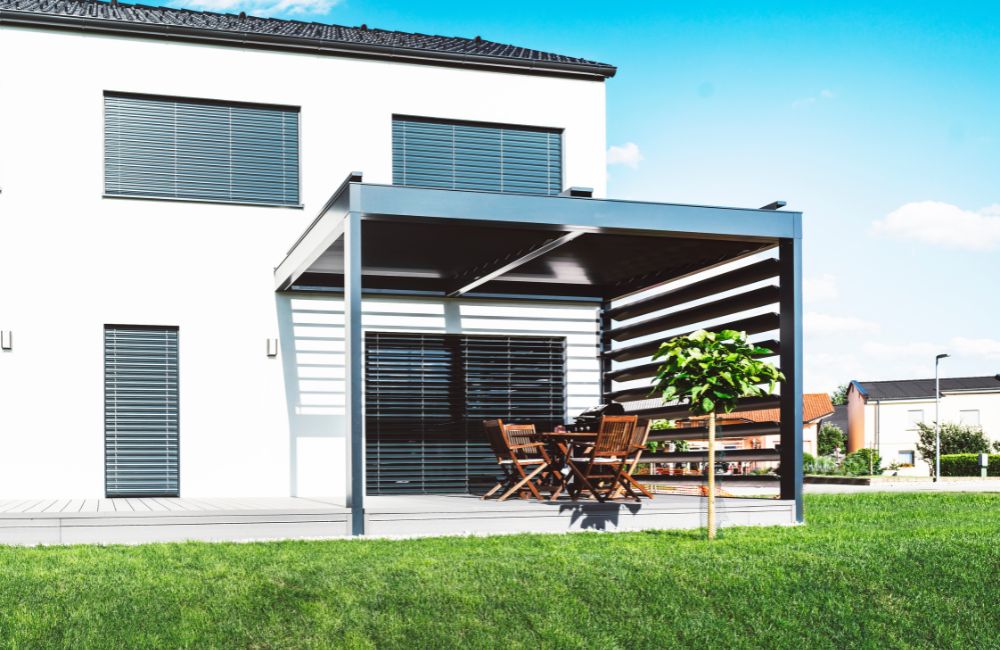
Frequently Asked Questions (FAQs)
Yes, retractable awnings in Connecticut are commonly installed on storefronts, restaurants, and office patios. They provide customers with shade and weather protection while enhancing curb appeal for businesses. Many commercial-grade models come with branding options like custom logos and color schemes.
In most residential cases, permits are not required, but some towns or homeowner associations may have regulations. It’s a good idea to check local zoning or building codes before installing retractable awnings in Connecticut, especially for larger or motorized models. Commercial properties are more likely to need approval, particularly if the awning extends over public sidewalks.
Yes, many manufacturers offer retractable awnings designed specifically for RVs, campers, and mobile units. These versions are built to handle motion and require different mounting hardware than residential models. While not as common, some Connecticut homeowners use these portable retractable awnings in Connecticut for seasonal structures like cabins or lakefront trailers.
Solar-powered options do exist and are becoming more popular for eco-conscious buyers. These models use solar panels to power the motor, making them energy-efficient and independent of household wiring. For homeowners interested in sustainable upgrades, solar retractable awnings in Connecticut offer a smart alternative with low operating costs.
Yes, by blocking direct sunlight from entering windows, retractable awnings in Connecticut help reduce fading on rugs, hardwood floors, and indoor furniture. UV rays can cause fabric and wood to deteriorate over time, even when indoors. A well-positioned awning limits that exposure and helps preserve home interiors.
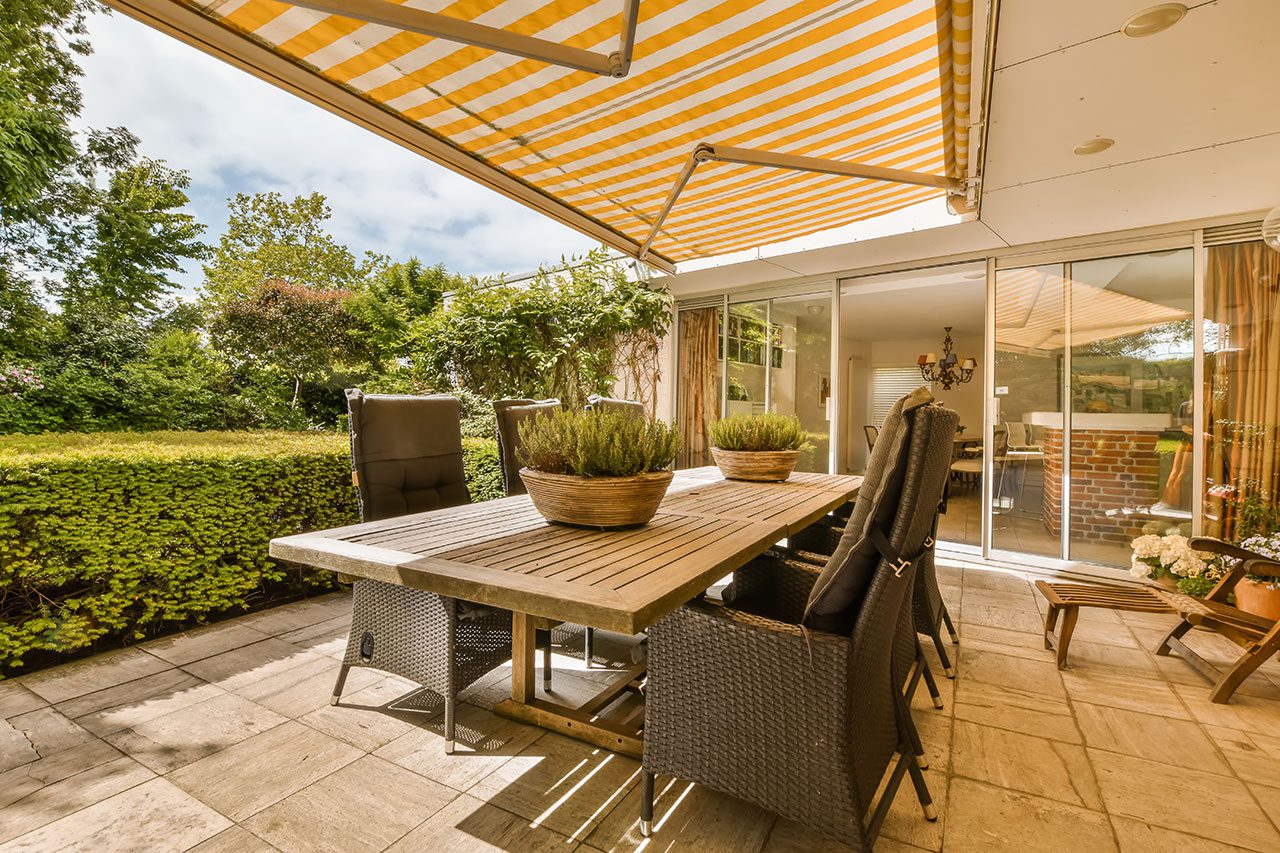
Upgrade Outdoor Living with Durkin’s Retractable Awnings!
Durkin’s has been helping Connecticut homeowners transform patios and decks into stylish, shaded escapes for over a century. Our retractable awnings combine craftsmanship, durable materials, and easy-to-use features that stand up to different types of weather. We offer custom solutions backed by experience and trusted service.

